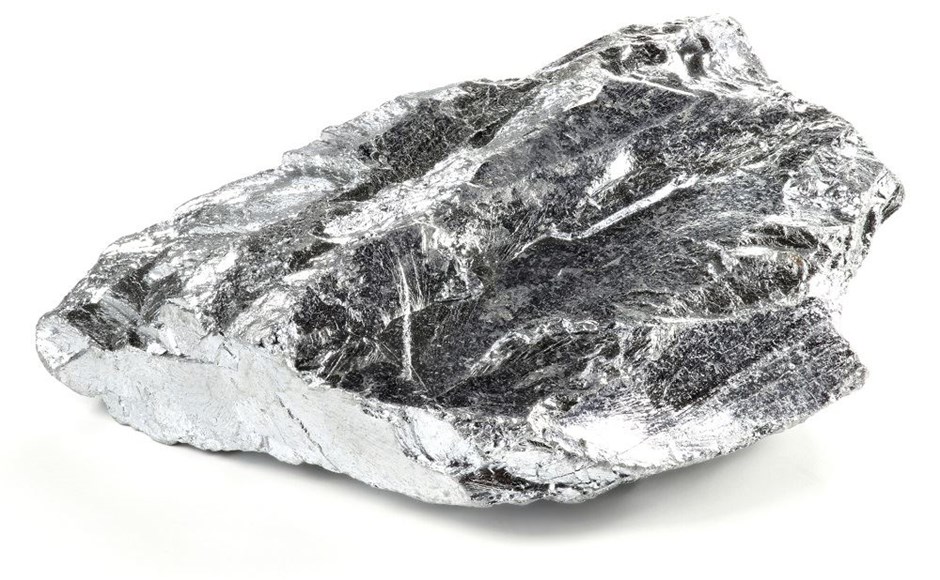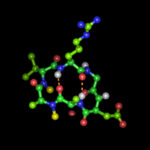What is Chromium?
Chromium, as trivalent (+3) chromium, is a trace element that is naturally present in many foods and available as a dietary supplement. Chromium also exists as hexavalent (+6) chromium, a toxic by-product of stainless steel and other manufacturing processes [1,2]. For the purposes of this article we will obviously be focused on trivalent chromium.
Chromium might play a role in carbohydrate, lipid, and protein metabolism by potentiating insulin action [1-5]. Although the precise mechanism for this activity has not been identified, scientists have proposed that chromium binds to an oligopeptide to form chromodulin, a low-molecular-weight, chromium-binding substance that binds to and activates the insulin receptor to promote insulin action [4,6-8]. Chromium might also have antioxidant effects [1].
In 2001, the Food and Nutrition Board (FNB) of the National Academies of Sciences, Engineering, and Medicine considered chromium to be an essential nutrient based on its effects on insulin action [2]. However, recent research has suggested that although chromium might have benefits at pharmacologic amounts (e.g., in the hundreds of mcg), it is not an essential mineral because an absence or deficiency of chromium does not produce abnormalities that can be reversed with the addition of chromium (see the Chromium Deficiency section below) [5,9-13]. The FNB has not evaluated chromium since 2001. However, in 2014, the European Food Safety Authority Panel on Dietetic Products, Nutrition and Allergies concluded that no convincing evidence shows that chromium is an essential nutrient and, therefore, setting chromium intake recommendations would be inappropriate [5].

In the blood, most chromium is bound to plasma proteins, particularly transferrin, and only about 5% is unbound [5,12]. Chromium accumulates mainly in the liver, spleen, soft tissue, and bone [2,5,12].
Chromium is excreted mainly in the urine [1,12,13]. Urinary chromium levels are therefore a good indicator of chromium absorption. However, because these levels are closely related to recent chromium intakes, they are not good indicators of chromium body stores [4,14]. Hair levels might reflect past chromium intakes [5], and some studies have measured chromium levels in hair, sweat, serum, and toenails [15,16]. However, no validated methods for determining chromium status and no clinically defined chromium deficiency state exist [6,8].
Possible Health Benefits:
Diabetes and Blood Sugar Management
Because chromium might potentiate the action of insulin, studies have examined whether increasing chromium intakes might reduce the risk of impaired glucose tolerance.
Numerous randomized controlled trials have assessed the effects of chromium supplements–often at pharmacological doses (e.g., in the hundreds of mcg)–in people without diabetes or with glucose intolerance or diabetes [16]. One of the most commonly cited intervention studies of the effects of chromium supplementation for type 2 diabetes was a 1997 randomized controlled trial [37]. The trial assigned 180 adults age 35–65 years with type 2 diabetes to receive 100 mcg chromium (as chromium picolinate), 500 mcg chromium, or placebo twice daily for 4 months. At both 2 and 4 months, participants receiving 1,000 mcg/day chromium had significantly lower fasting serum glucose concentrations than those receiving placebo or 200 mcg/day chromium. At 4 months, for example, mean fasting serum glucose levels were 7.1 mmol/L (128 mg/dL) in the group receiving 1,000 mcg/day chromium and 8.8 mmol/L (159 mg/dL) in those receiving placebo. Mean serum glucose concentrations after a 75 g glucose challenge were also significantly lower at both 2 and 4 months in those receiving 1,000 mcg/day chromium (10.5 mmol/L [189 mg/dL] at 4 months vs. 12.3 mmol/L [222 mg/dL] for placebo). In comparison with placebo, both 200 mcg and 1,000 mcg/day chromium also significantly reduced fasting insulin concentrations at both 2 and 4 months, as well as insulin concentrations after a glucose challenge. Finally, hemoglobin A1c (HbA1c) levels were significantly lower after 4 months in participants receiving 200 mcg/day chromium (mean 7.5%) or 1,000 mcg/day chromium (mean 6.6%) than in those receiving placebo (mean 8.5%). HbA1c is a robust measure of blood glucose control because it reflects long-term changes in blood glucose levels [38].
Metabolism
Metabolic syndrome is a group of risk factors—abdominal obesity, high triglyceride level, low high-density lipoprotein (HDL; good) cholesterol level, hypertension, and high fasting blood glucose level—that raise the risk of heart disease, diabetes, and stroke [45]. Insulin resistance is an integral component of this condition and is a potential therapeutic target for dietary interventions for metabolic syndrome [46]. A prospective study of 3,648 adults age 20–32 years found that baseline toenail chromium concentrations were inversely associated with the incidence of metabolic syndrome over 23 years of follow-up [47]. For these reasons, some scientists have hypothesized that chromium supplements might benefit people with metabolic syndrome.
Only a few clinical trials of chromium supplementation for metabolic syndrome have been conducted [46,48-50]. One of these trials included 63 adults age 18 to 75 years with metabolic syndrome who received either 500 mcg chromium picolinate or placebo twice daily for 16 weeks [46]. In comparison with placebo, chromium supplementation significantly increased acute insulin response to glucose but did not affect HbA1c levels, insulin sensitivity, or other measures of glucose metabolism. Chromium supplementation also had no effect on body weight or serum lipids.
Fertility and Hormone Management
PCOS is a common endocrine disorder affecting women of reproductive age. It is characterized by infertility, obesity, dyslipidemia, hyperandrogenism, and elevated risks of type 2 diabetes and cardiovascular disease [51,52]. Because insulin resistance is often a central component of PCOS, studies have investigated the use of chromium supplements in people with PCOS to help maintain glycemic control and reduce lipid levels [16,53].
Four recent systematic reviews and meta-analyses of randomized clinical trials have examined the effects of chromium supplements on signs and symptoms of PCOS [52,54-56]. One analysis included seven trials with a total of 351 participants that administered chromium (as chromium picolinate) at 200 mcg to 1,000 mcg daily for 8 to 24 weeks [52]. Chromium supplementation had no effect on fasting blood glucose, total testosterone, dehydroepiandrosterone, follicle-stimulating hormone, or luteinizing hormone levels. However, chromium did significantly reduce body mass index (BMI) by 2.37 kg/m2 and free testosterone levels by 0.52 pg/mL in comparison with placebo; it also significantly reduced fasting insulin levels by 0.33 milli-IU/mL.
Weight Management and Body Mass
Because chromium might amplify insulin action, some scientists have proposed that chromium supplementation could reduce the amount of glucose converted to fat and increase protein synthesis and, hence, muscle mass [12]. Some preliminary research also indicates that chromium supplements might reduce food intakes, hunger levels, and fat cravings [65]. Therefore, chromium supplementation has been proposed to both enhance weight loss and improve body composition by decreasing body fat and increasing lean body mass; its effects on these outcomes have been evaluated in several clinical trials [12,66-69].
A 2019 meta-analysis included 21 trials that measured the impact of chromium supplementation on anthropometric indexes in a total of 1,316 participants age 18 or older with overweight or obesity [70]. Trial durations ranged from 9 to 24 weeks, and chromium doses were 200 to 1,000 mcg per day. Most trials used chromium picolinate, and others used chromium-enriched yeast or chromium nicotinate. Participants taking chromium supplements lost significantly more weight, 0.75 kg, than those taking placebo and had a significant 0.40 kg/m2 reduction in BMI and body fat percentage, 0.68%, in comparison with placebo. The chromium supplements had no significant effect on waist circumference or waist-to-hip ratio.
Two other systematic reviews and meta-analyses had similar findings [71,72], as did a 2013 Cochrane Review [67].













